标签:RKE 没有 直线 微软雅黑 round back ima while for
我们知道较早的分类模型——感知机(1957年)是二类分类的线性分类模型,也是后来神经网络和支持向量机的基础。
感知机模型是一种二分类的线性分类器,只能处理线性可分的问题,感知机的模型就是尝试找到一个超平面将数据集分开,在二维空间这个超平面就是一条直线,在三维空间就是一个平面。
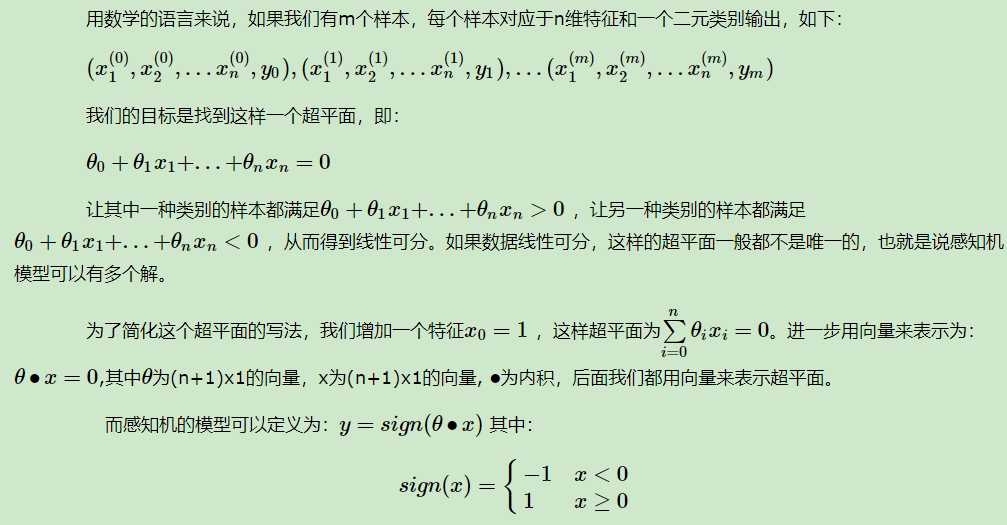
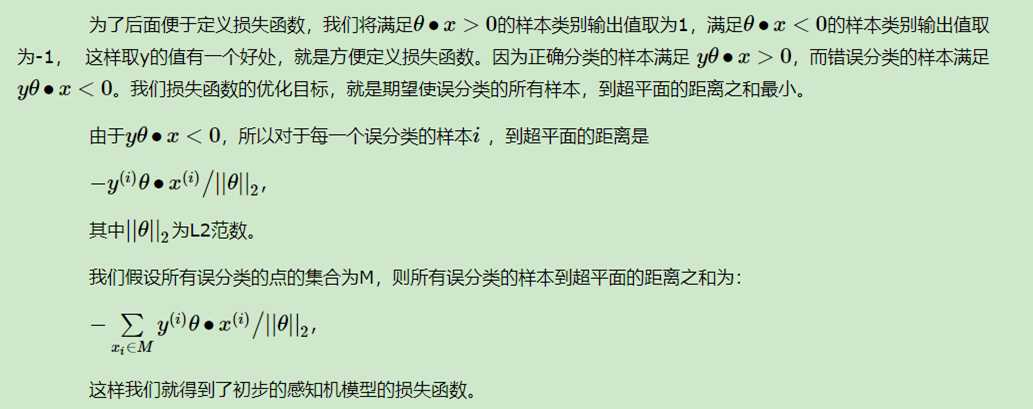
这样我们就得到了初步的感知机模型的损失函数。
我们研究可以发现,分子和分母都含有θ,当分子的θ扩大N倍时,分母的L2范数也会扩大N倍。也就是说,分子和分母有固定的倍数关系。那么我们可以固定分子或者分母为1,然后求另一个即分子自己或者分母的倒数的最小化作为损失函数,这样可以简化我们的损失函数。在感知机模型中,我们采用的是保留分子,即最终感知机模型的损失函数简化为:

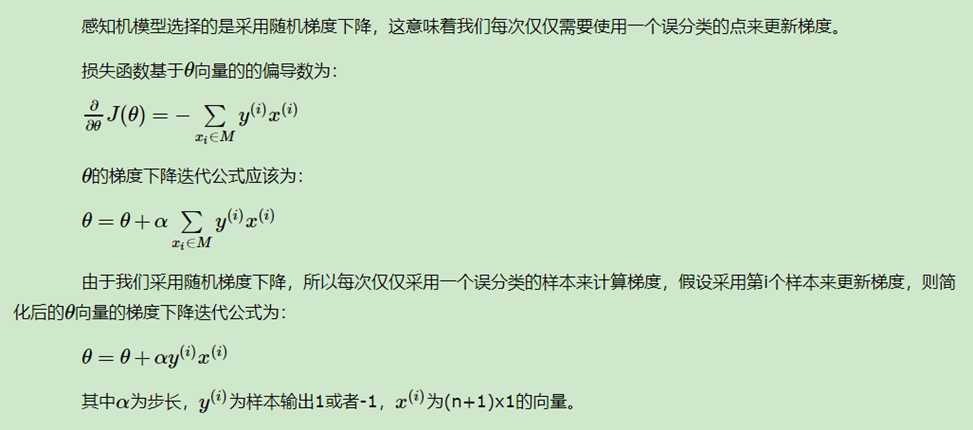
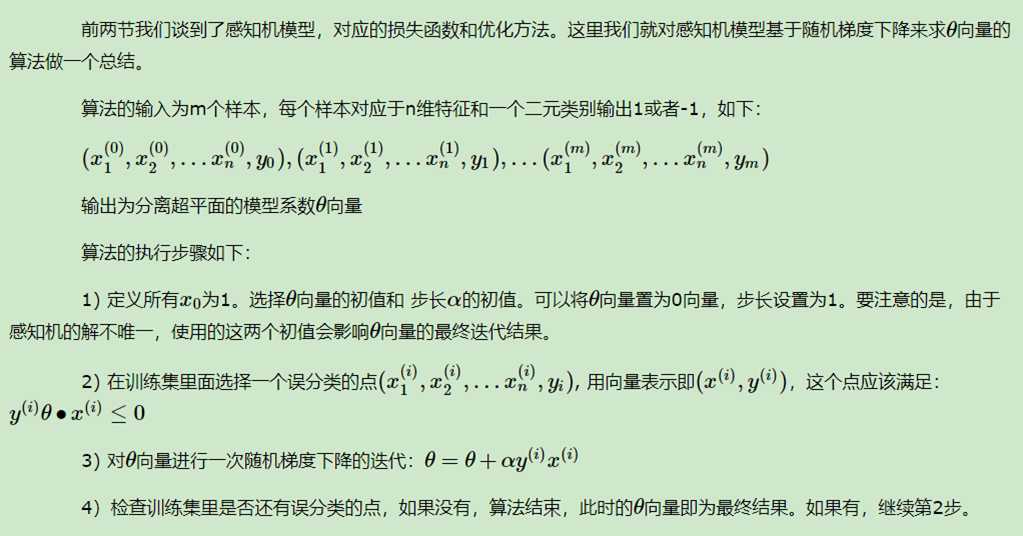
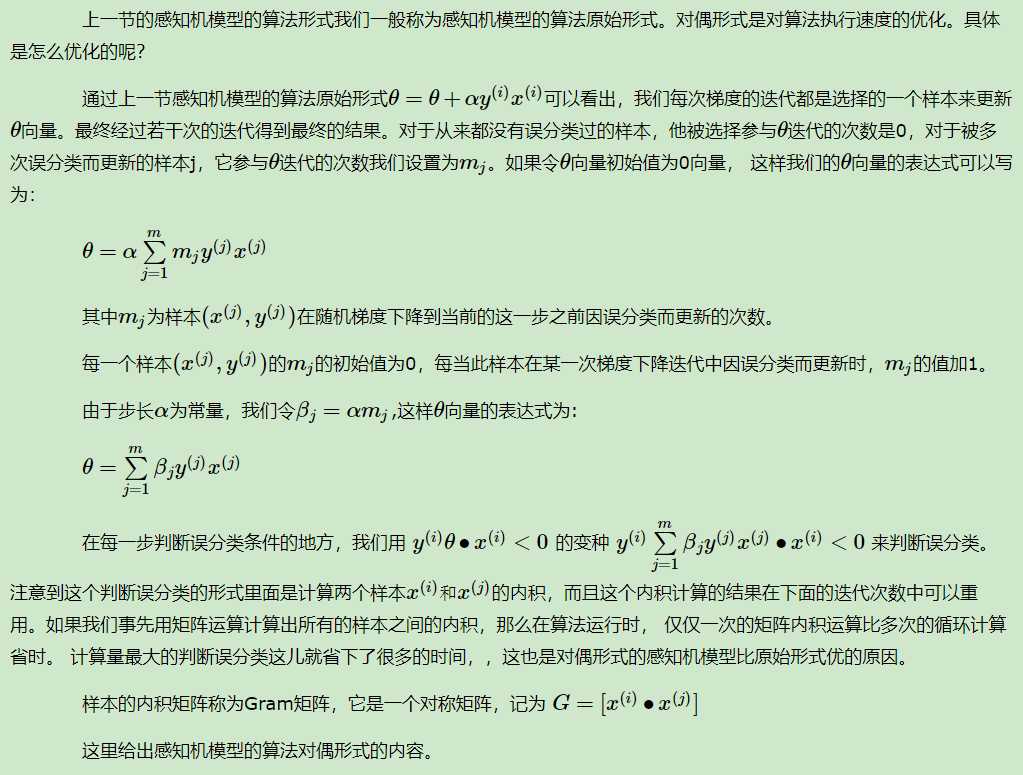
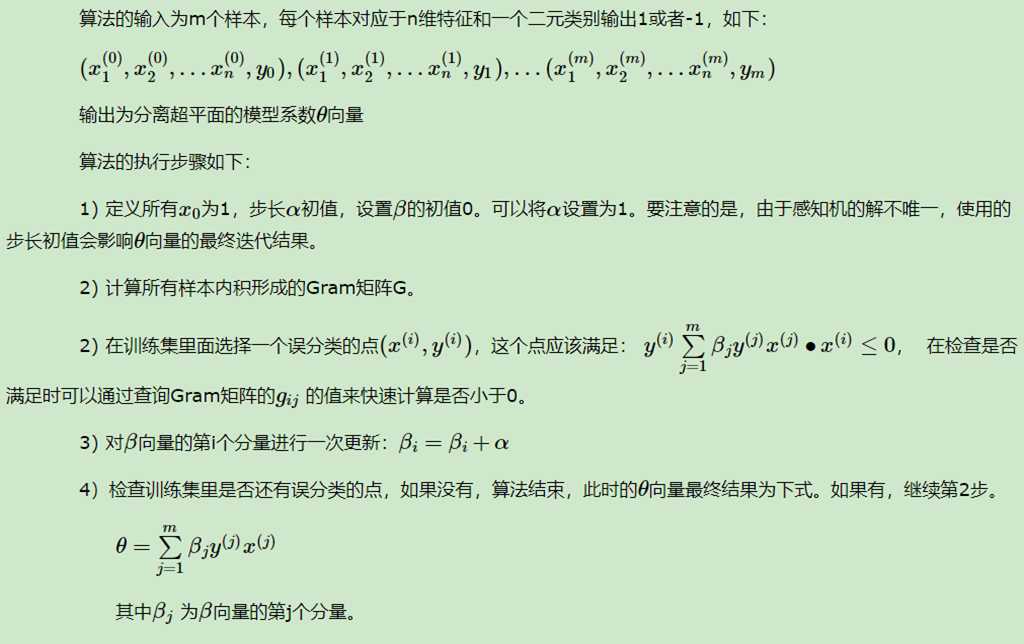
转自:https://www.cnblogs.com/pinard/p/6042320.html
1 2 3 4 5 6 7 8 9 10 11 12 13 14 15 16 17 18 19 20 21 22 23 24 25 26 27 28 29 30 31 32 33 34 35 36 37 38 39 40 41 42 | import numpy as np from matplotlib import pyplot as plt x=np.array([[1,1],[3,3],[4,3]]) y=np.array([[-1],[1],[1]]) w=[0,0] b=0 ? def Train(x,y,w,b): length = x.shape[0] j=0 while True: count=0 for i in range(length): print("迭代次数为:%d w=[%d,%d] b=%d"%(j,w[0],w[1],b)) if y[i]*(np.dot(w,x[i])+b)<=0: #未被正确分类 #更新w,b w=w+y[i]*x[i] b=b+y[i] count+=1 j+=1 if count==0: f="f(x)=sign(%d*x+%d*x+%d)"%(w[0],w[1],b) print("感知机模型为:%s"%f) return w,b,f w,b,f=Train(x,y,w,b) ? #画分离超平面图 def fun(x): y=(-b-w[0]*x)/w[1] return y x_data=np.linspace(0,5) y_data=fun(x_data) plt.plot(x_data,y_data,color=‘r‘) plt.title("perceptron") ? #画散点图 for i in range(x.shape[0]): if y[i] < 0: plt.scatter(x[i][0], x[i][1], marker=‘x‘,s=50) else: plt.scatter(x[i][0], x[i][1]) plt.show() |
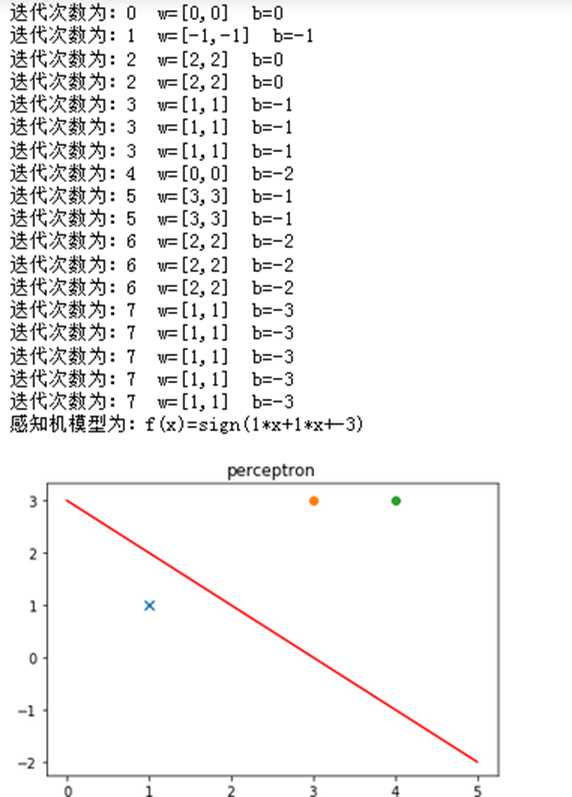
感知机的对偶形式与原始形式并没有多大的区别,运算的过程都是一样的,但通过对偶形式会事先计算好一些步骤的结果并存储到Gray矩阵中,因此可以加快一些运算速度,数据越多节省的计算次数就越多,因此比原始形式更加的优化
import numpy as np import matplotlib.pyplot as plt x = np.array([[3, 3], [4, 3], [1, 1]]) y = np.array([[1], [1], [-1]]) ? # 创建gram矩阵 z = np.transpose(x) m = np.dot(x,z) print("构建的Gram矩阵为:\n",m) print("-------------------------") a = np.zeros((x.shape[0], 1)) b = 0 ? def train(x,y,m,a,b): length = x.shape[0] while True: count = 0 for i in range(length): n = np.dot(m[i], a * y ) + b if n* y[i] <= 0: a[i] = a[i] + 1 b = b + y[i] count += 1 if count == 0: w = np.sum(x * a* y, axis=0) print(w,b) print("感知机模型:\nf(x) = sign(%dx+%dy+(%d))\n"%(w[0],w[1],b)) return w,b w,b = train(x,y,m,a,b) ? def fun(x): y = (-b -w[0] * x) / w[1] return y x_data = np.linspace(0, 5, 100) # 创建等差数组 y_data = fun(x_data) plt.plot(x_data, y_data, color=‘r‘, label=‘y1 data‘) for i in range(x.shape[0]): ? if y[i] < 0: plt.scatter(x[i][0], x[i][1], marker=‘x‘, s=50) else: plt.scatter(x[i][0], x[i][1], s=50) plt.show() |
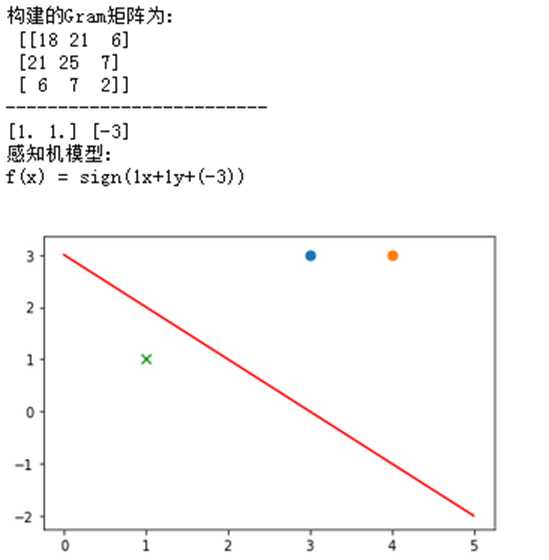
? ?
? ?
? ?
? ?
? ?
? ?
? ?
? ?
标签:RKE 没有 直线 微软雅黑 round back ima while for
原文地址:https://www.cnblogs.com/yifanrensheng/p/12354924.html